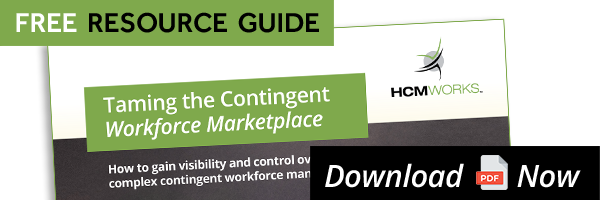If you’re struggling with your current contingent workforce management practices it’s likely that your company is considering engaging a managed services provider (MSP) for their in-depth knowledge and expertise.
That’s great news! An MSP that specializes in the contingent workforce will ensure your company has a centralized management strategy that reduces your costs, prevents inconsistent hiring techniques, improves your access to top talent, increases your visibility and control over workers and much more.
By partnering with an MSP you will be putting your contingent workforce management program in the hands of an outsourced expert. This means it’s essential that you trust them, and that they are able to positively impact your business by meeting key performance indicators (KPIs) and offering a return on investment (ROI).
As you’ll already know, these strategic business decisions are generally managed by a formal request for proposal (RFP) process.
What you may not know, is that many companies are making some big mistakes in their RFP process that could be affecting how successful their MSP contingent workforce program is. Before we get into those mistakes and how they can be rectified, let’s first take a quick look at what an RFP is.
What is an RFP?
An RFP is a formal document that large companies use to elicit bids from potential vendors. The aim is to procure a product or service through the responding business proposals.
The RFP itself will specify exactly what your business is looking for, describing each evaluation criterion on which a vendor’s proposals will be assessed. The process has been designed to bring structure and transparency to outsourced business decisions, while reducing the risk of failure.
In general, an RFP will include:
- Background on your company, and the lines of business which it has.
- Specifications that define the specific solution(s) you are seeking.
- Technical requirements and the technologies needed to implement the solution.
- The budget you have for this particular project.
- Evaluation criteria in which your company will explain exactly how proposals will be graded.
Once completed, your RFP will allow your business to compare vendors and make an informed and objective decision on which company will work best to provide a solution to meet your organization’s unique needs.
The most common issues with RFPs and how to rectify them
While most companies probably know what they are looking for deep down, many RFPs suffer from significant confusion around what the organization is actually looking for from their managed services provider.
An RFP that is based on guesswork and that doesn’t clearly describe business goals will help neither party in the long run. That’s why here at HCMWorks we’ve listed a few key RFP mistakes and how your company can ensure it doesn’t make those same errors.
Mistake #1 - Not sharing your budget
This is one of the biggest mistakes of any RFP proposal. Sharing the budget you have for your contingent workforce management solution will give your outsourced MSP an idea of what technologies they can use and an understanding of how they can maximize the value of your program.
You don’t need to come up with an exact figure, but at least think strategically about how much your company can realistically invest into the solution. It will give your potential MSP an idea of the resources they can leverage, which they will then discuss in their RFP response.
Mistake #2 - No clarity on your desired solution
Many RFPs are incredibly long. They can include pages of restrictions, insurance requirements and legal terms. Unfortunately, many companies make the mistake of not being crystal clear about what they’re actually looking for.
When writing your RFP, make sure you explain what you are looking for right at the start of your document. This will save your vendors from sifting through tonnes of pages, and is likely to lead to better responses and less, but higher quality, options.
However, while your RFP should accurately and honestly document the existing processes and problems, it shouldn’t suggest possible solutions. Your potential MSP should be the expert, and your RFP is a request for them to propose their best solution.
Mistake #3 - Improper analysis of RFP processes
Many companies focus so hard and put so much effort into preparing their RFP process, that they forget the evaluation process is just as important. In fact, selecting your managed services provider is the most critical decision you will make.
Ensure your company does this step properly and strategically by creating a pre-defined selection criteria (this should be completed before writing your RFP), completing provider due diligence and asking questions where necessary.
Want more information on creating an RFP or simply want to learn more about how HCMWorks can help transform your contingent workforce management strategy? Contact our team of experts today, we would be more than happy to help with any questions you have.



